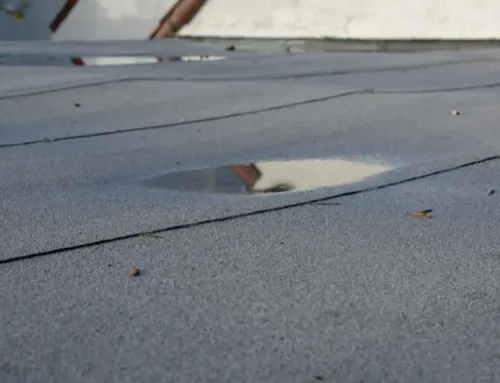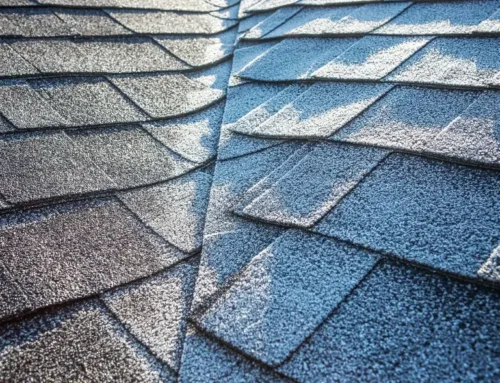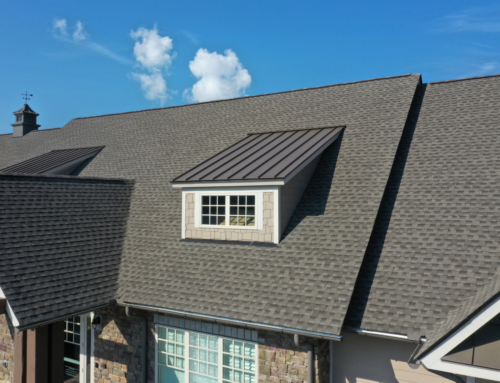
Everything You Need to Know About Financing a New Roof
Hopefully, you’re saving for a rainy day. But when that rainy day reveals a leak in your roof and water begins seeping through the walls of your home, you may find that you don’t have quite enough to cover the cost of a new roof. The average cost of a new roof is about $10,000 plus. While this may not be what you thought you’d spend your money on, it’s a necessary expense. The good news is, there are several options to finance the roof replacement. We’ll explain what those options are and discuss the pros and cons of each, so you can make the best choice for you and your family.
1. Home Equity Loan
How it works: A home equity loan is also known as a second mortgage. The bank uses your home equity (the part of your home that you own outright) as collateral on a loan. You’ll pay back the loan in fixed monthly payments. The term of the home equity loan can range from 5 to 30 years.
Pro: While the interest rates are typically fixed, you may be able to deduct the interest you pay on the loan from your federal income taxes. Be sure to talk with a financial professional to make sure this is possible and to correctly itemize deductions.
Cons: It can take two to four weeks to close on this loan after a lengthy approval process. You may not be able to afford this kind of time depending on your roof’s damage. Also, consider that you could lose your house if you are unable to keep up with the roof-loan payments for any reason.
2. Home Equity Line of Credit
How it works: Home Equity Line of Credit, or HELOC, uses your home equity as collateral to establish a credit account that you can use as a credit card. A 10-year draw period allows you to write checks or use a debit card to make payments against your allotted spending limit. Then, you can make payments to pay down the balance—meeting a minimum monthly payment. After the draw period, you are responsible for paying off the remaining balance in a lump sum or a series of fixed monthly payments.
Pro: Similarly to a home equity loan, you may be eligible to take your interest payments as a deduction on your federal income taxes.
Cons: Interest rates may be appealing at first, but after the first 12 months, you may see a shocking annual increase. It is also difficult to predict how much a HELOC will cost you over the life of the loan.
3. Cash-out Refinance
How it works: A cash-out refinance allows you to take out a new mortgage on your home, based on its current market value, pay off your existing mortgage, and treat any remaining cash as a lump-sum loan.
Pros: This loan may allow you to secure a new mortgage with a lower interest rate or replace a variable-rate mortgage with a fixed-rate loan.
Cons: Closing costs and the potential for additional years added to your payment timeline may mean you end up paying more for the house that you would have under your original mortgage. You just need to consider if a new roof is worth the extra cost. Another factor to consider is the time it takes to close. You’ll need to decide if your home can wait 30-45 days to begin repairs.
4. FHA 203(k) Loan
How it works: There are two types of FHA 203(k) loans. A limited 203(k) mortgage covers repairs up to $35,000 which is typically enough to cover most roof replacement jobs. The other is a standard FHA 203(k) mortgage. In this case, an FHA-approved 203(k) consultant acts as a liaison between you, the lender, and the roofer. The consultant creates the work plan, ensures proper construction standards are met, and signs off on the funds to the roofer and contractors.
Pros: If your credit score is 580 or higher, you may qualify for the minimum 3.5% down payment for the mortgage. If you lack sufficient equity in your home, this may be the best option for you.
Cons: Writing up specs for FHA-approved consultants range from $400 to $1,000. Consultants may charge additional fees for milestone inspections throughout the project. And, if your credit score is below 580, you’ll be expected to put down 10% of the amount of the loan.
5. FHA Title 1 Loan
How it works: This fixed-rate loan is designed to fund home improvements that improve the home’s overall livability. A new roof will likely fall under this description. You’ll have to have a debt-to-income ratio of 45% or less to qualify for this loan.
Con: If you borrow more than $7,500, you’ll have to offer your home as collateral, which means if you fail to make payments, you could lose your home altogether.
6. Personal Loan
How it works: Personal loans are unsecured, meaning there is no asset backing them up. Annual percentage rates or APRs reflect interest rates that are dependent on your credit score. Applicants with a credit score of 760 or higher, may have an interest rate of 9.3%, and applicants with a score of 640 to 679 may have an interest rate of 22.16%.
Pro: With this loan, your house will not be at risk if you happen to find yourself unable to keep up with payments.
Con: Because there is no collateral, you will have a higher interest rate than you would on a home equity loan.
7. Contractor Financing
How it works: This is a quick-approval loan done through the roofing contractor. Terms and rates will be dependent on your credit score and the contractor.
Pro: This process is usually fast, often requiring a credit application that can be done over the phone or online. Alliance Roofing Company, LLC provides honest financing through Wells Fargo and GAF SmartMoney Powered by Payzer.
Con: Don’t get sidetracked by introductory interest rates. Make sure you’ve thoroughly read the terms before accepting to understand how long the introductory interest rate lasts, when the new rate will change, and how that will impact your monthly payments.
8. Credit Card
How it works: You can pay for the repair using a credit card, but honestly, this should be a last resort. This should only be considered if the repair costs are low, or you’re able to pay off the majority of the total cost within a year. If this is the case, you can get a new credit card with an introductory APR of 0%.
Pro: If you can pay off the credit card during the promotional period, which is typically 12-18 months, then you’ve managed to repair your roof with an interest-free loan.
Con: After the promotional period, new credit cards have an average APR of 19.33%. If you can’t pay off the card within the year, you’re looking at a very costly expense.
When it comes to repairing or replacing your roof, you can trust Alliance Roofing Company to get the job done right and provide you with affordable, honest financing options. To learn more about our financing options, contact us today.









